Spondylolisthesis (plural: spondylolistheses) denotes the slippage of one vertebra relative to the one below.
On this page:
Terminology
Although etymologically, it is directionless (see below) and could be applied to both anterolisthesis and retrolisthesis, in practice, spondylolisthesis is used synonymously with anterolisthesis. Often, particularly in the lower lumbar spine, it is due to spondylolysis (pars interarticularis defects) 6.
Epidemiology
The incidence of spondylolisthesis in childhood is ~5%, mostly due to spondylolysis. Incidence increases in adulthood to ~12.5% (range 10-15%), mostly due to degenerative change 9.
Clinical presentation
When symptomatic, patients present with low back pain, radiculopathy and/or neurogenic claudication 9.
Pathology
Spondylolisthesis can occur anywhere in the vertebral column but is most frequent in the lumbar spine, particularly when due to spondylolysis at L5/S1 9, and when due to degeneration at L4/5 7.
Classification
Wiltse classification: divides into types by etiology
Meyerding classification: grades by severity of the slip
Radiology report
To adequately describe a spondylolisthesis, the type and grade must be stated ref and the presence or absence of instability 4.
Radiographic features
Plain radiograph
On lateral lumbar spine x-rays, a "step" in the alignment of the posterior cortices can be visible and then graded by the Meyerding classification. The type of spondylolisthesis may also be able to determined. On flexion/extension views, translation >4 mm indicates instability 4.
Treatment and prognosis
Indications for surgical management of spondlylolisthesis includes 9:
symptomatic grade 1/2 slips refractory to non-operative management (usually 6 months)
grade 3 or higher slips
progressive slip > 1 grade
instability
History and etymology
Spondylolisthesis is from the Ancient Greek σπονδύλους (spondylous) meaning vertebra and ολίσθηση (olisthesis) meaning slippage 6. Carl von Rokitansky, (1804-1878), an Austrian pathologist, was the first to describe spondylolisthesis in 1839 8.



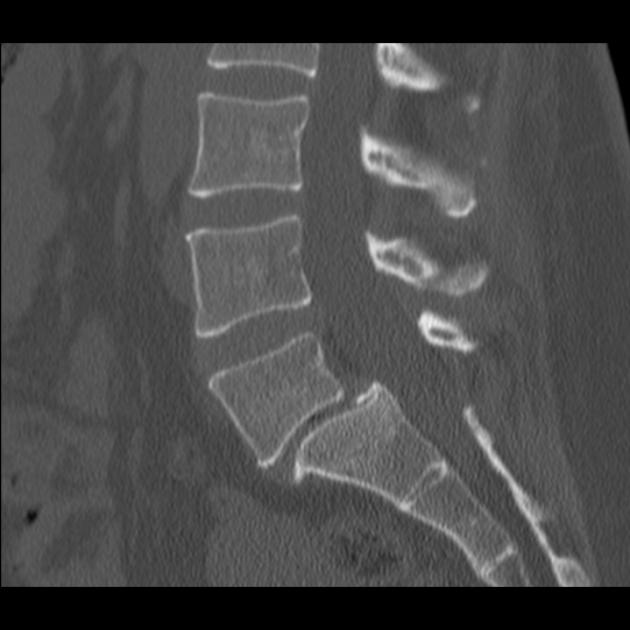


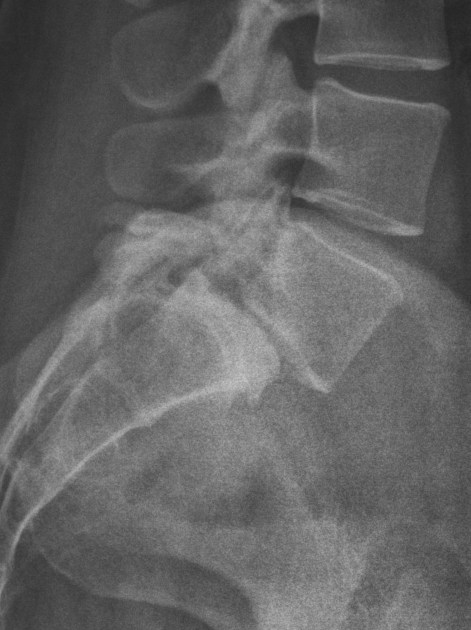
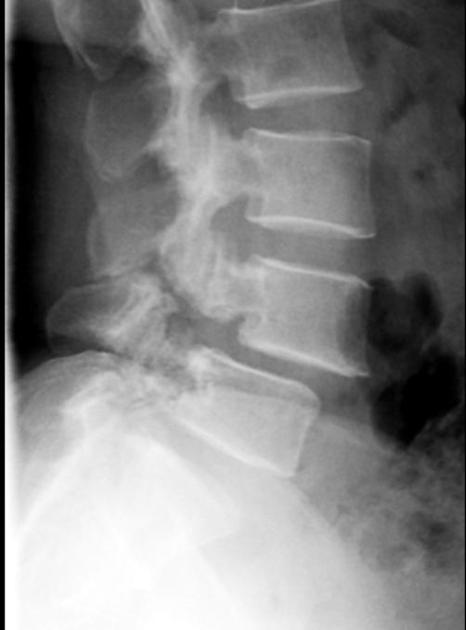

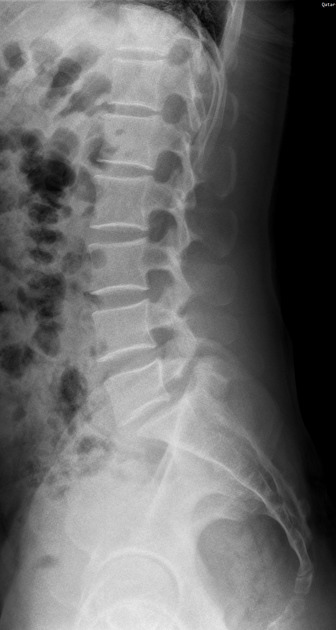
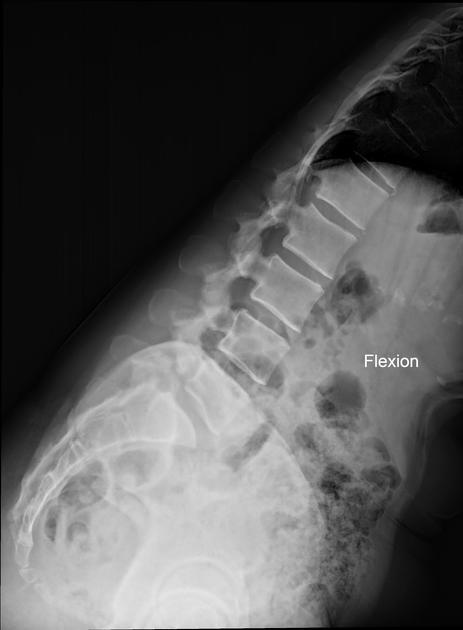

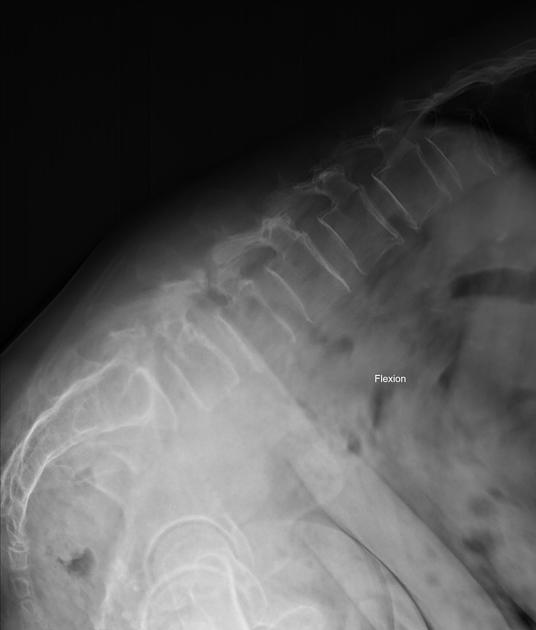


 Unable to process the form. Check for errors and try again.
Unable to process the form. Check for errors and try again.